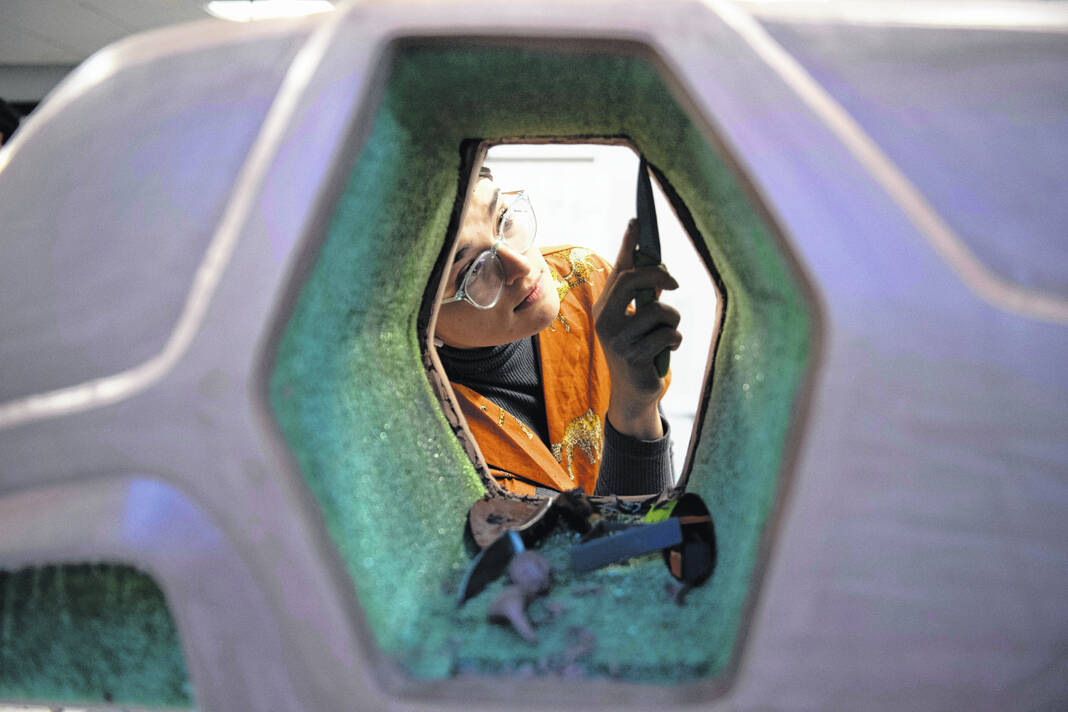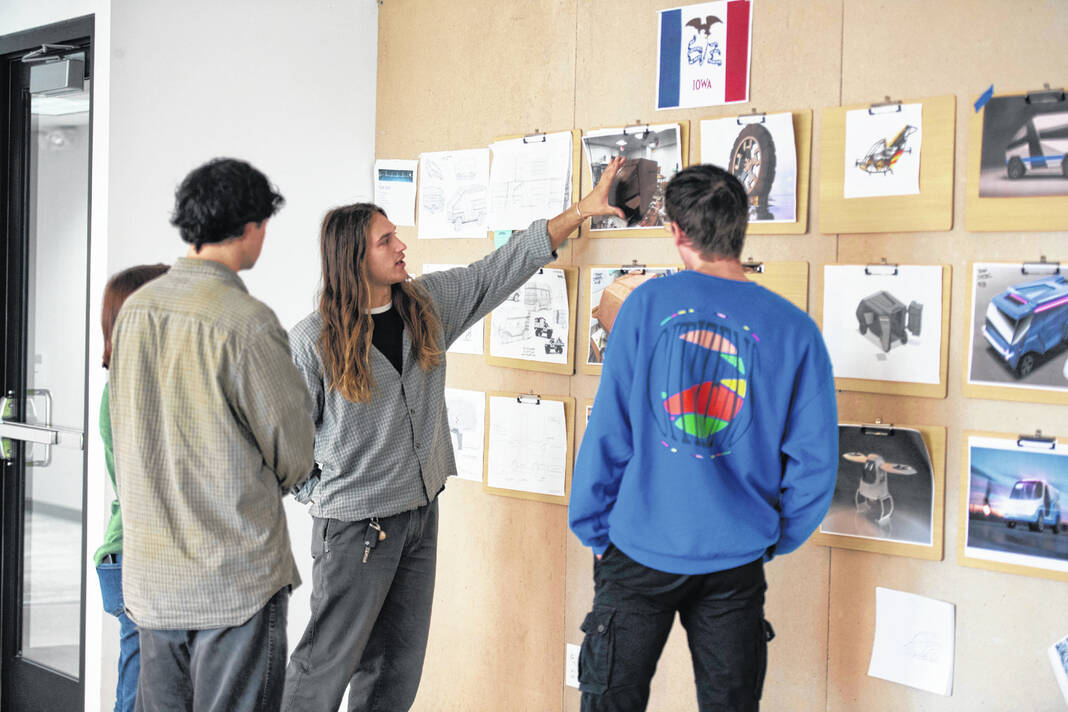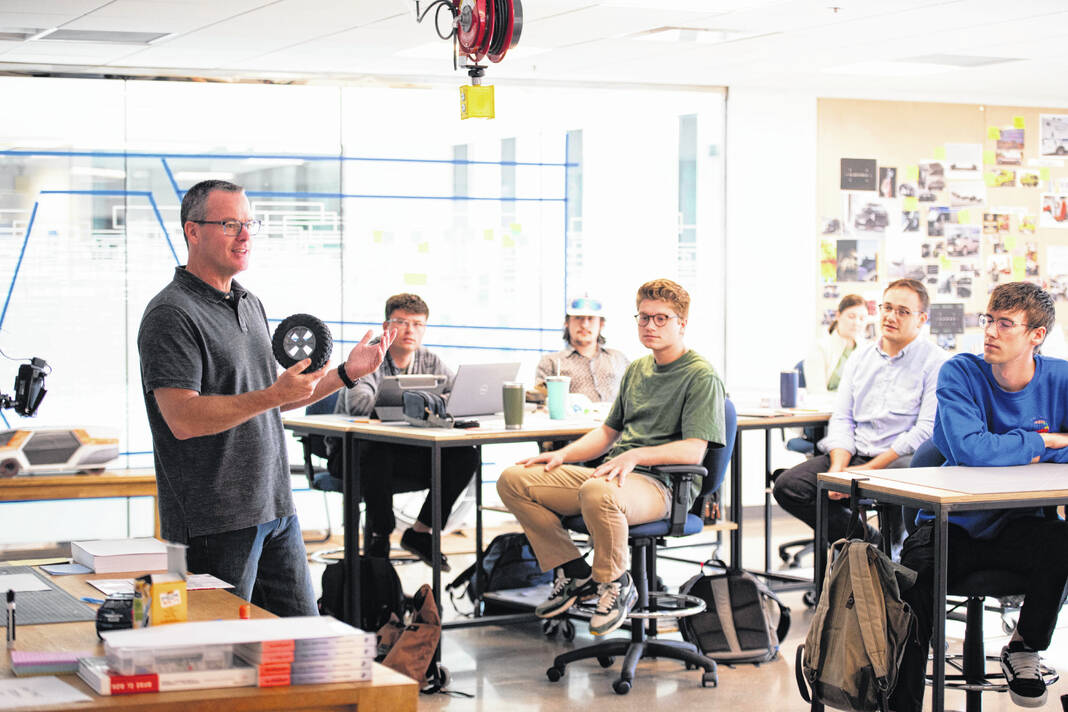
Submitted photos | Cedarville University
Cedarville University industrial and innovative design seniors wrapped up a five-week transportation design project with the aim to save lives. Pictured, students create clay models of their designs.

Cedarville University students discussing concepts.

Tom Balliett teaching the transportation design course.
CEDARVILLE — Although the semester is just getting started, Cedarville University industrial and innovative design seniors have already wrapped up a five-week transportation design project with the aim to save lives.
For their most recent project in transportation design, senior students looked at a real-life problem and explored innovative possibilities. This project began with a concept developed by Tom Balliett, CFO, co-founder and instructor at the International Center for Creativity (ICC). The industrial and innovative design students’ laboratories are located at the ICC in Dublin, Ohio.
As a paramedic, Balliett was intrigued by a new project that the lieutenant governor of Iowa, Adam Gregg, recently proposed to lower emergency response times in rural areas. Described by Gregg as “Uber for EMS,” Iowa is testing an app that crowdsources volunteers in rural areas.
“Uber not in the sense that we’re transporting folks,” said Gregg. “This is about locating and identifying a nearby trained first responder who can be the first person to respond and stabilize somebody until the ambulance comes.”
Balliett took this innovation one step further with his theoretical project for the students at the ICC. He proposed that the students design a futuristic personal response vehicle for the first responder that could withstand the roughest terrain, as well as a more traditional autonomous vehicle to replace the traditional ambulance.
“We let students dream a little bit about solving a problem,” said Balliett.
Students produced different concepts for each of the vehicles and then competed for the top designs. Once the top designs were chosen, students split into teams to create detailed design presentations following the model they were assigned.
These presentations included a clay model of the vehicle, virtual reality (VR) renderings of the design and 3D-printed design components. Students were expected to address both functional and aesthetic components in their design, resulting in a sophisticated and professional presentation. They are skilled in using innovative VR technology and artificial intelligence to ethically enhance their work.
As their final year at the ICC begins, seniors are using a variety of skills to execute ambitious projects. The ICC and Cedarville are committed to providing the best education and career preparation possible for industrial design students. Projects like this one give students applicable skills in a variety of areas. Balliett and the other instructors at the ICC teach students creative thinking, technical skills as well as soft skills like teamwork and designing with empathy.
“One other aspect of this course that makes it unique is that we utilize guest designers and lecturers in the classroom to create a rich student experience,” said Balliett. “In addition to utilizing ICC staff like Jim Stevenson, Jacob Tesmer and Trayton Ojala, we also bring industry experts like Italian automotive designer Boris Fabris, and Industrial Designer Brian Shane into the classroom to teach.
“Industrial design is all about empathy. It’s not an expression of yourself; it’s about how you can solve problems for other people. This project brings the idea of empathy into sharp focus as students learn more about not only what emergency responders provide for the community but what they need to be able to do.
Cedarville and the ICC partner to pull together all the pieces of the innovation cycle through business, mechanical engineering, art, and design with empathy and integrity at the core of it all. This project is just one of many examples of the passion of designers at the ICC and their vision for a more empathetic future.

